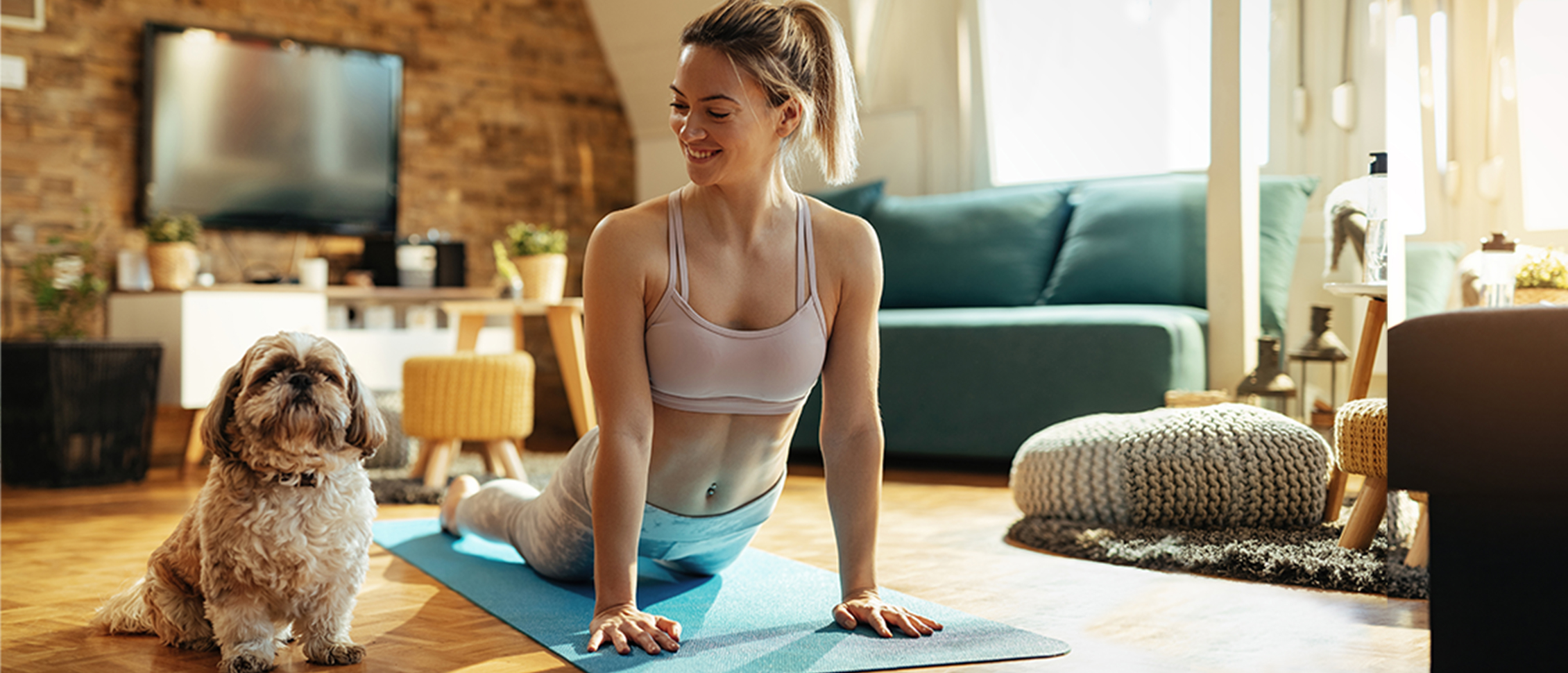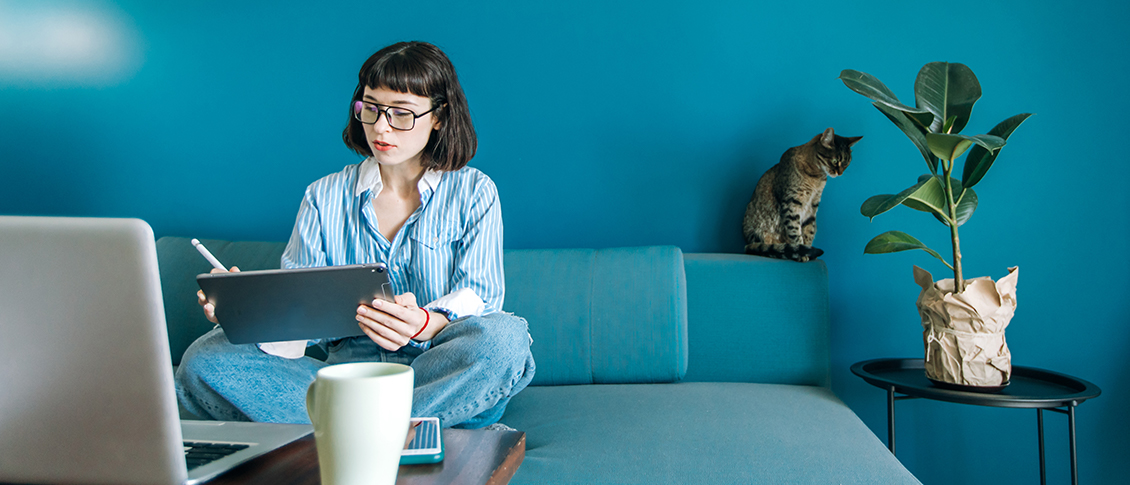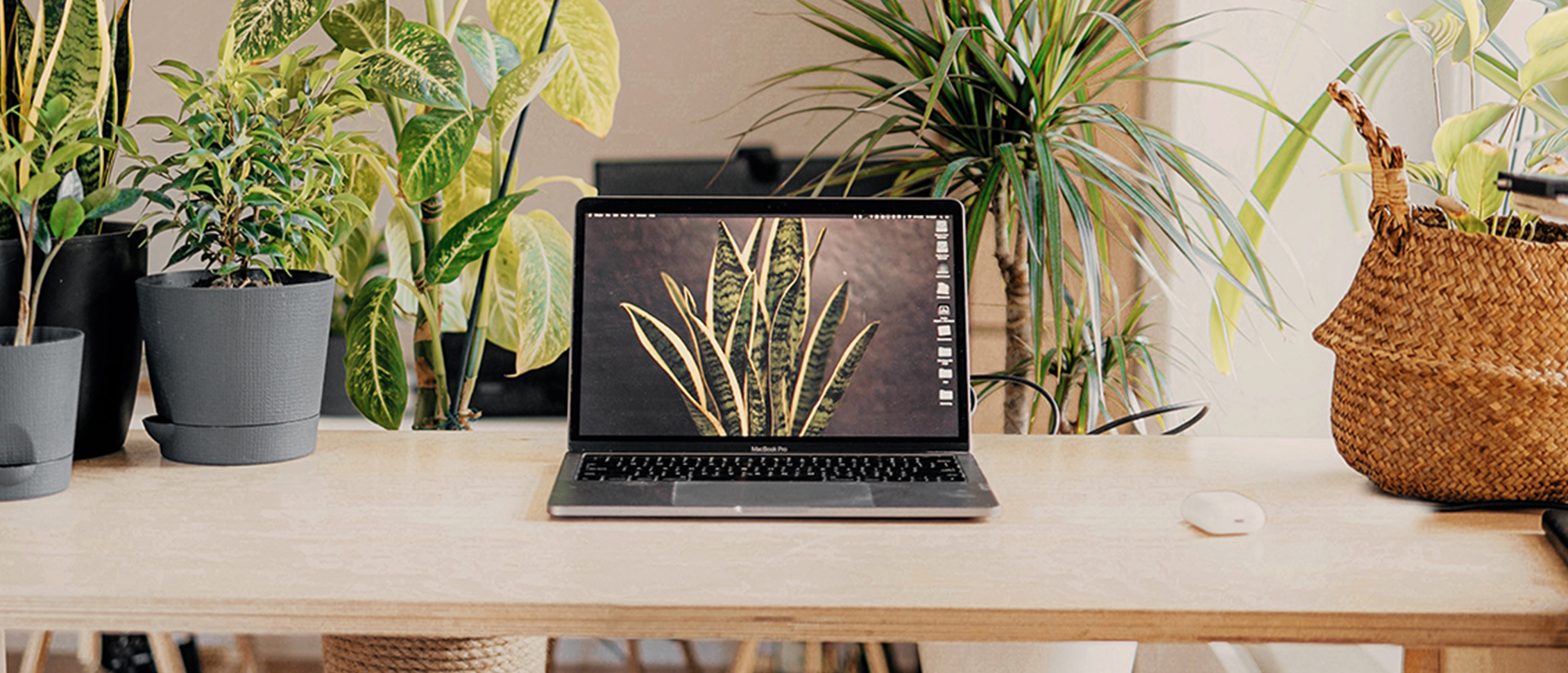Adopting Ergonomics at Home to Avoid Fatigue
05.09.2021

The mid-morning yawn. The afternoon slump. Unless you’re a caffeine addict there are always going to be points in the working day where you are feeling tired. For many, working from home is demotivating. Lack of colleague interaction, sitting in your pyjamas all day, and no dedicated working from home space doesn’t induce productivity. However, feeling dispirited is minor compared to fatigue.
Fatigue should not be ignored. The impact it can have on your mental and physical health can be irreversible. Feeling fatigued is much more than feeling tired and you may find you’re suffering with headaches, dizziness, impaired cognitive function, low mood, irritability and muscle soreness as a result.
Battling through fatigue when working from home could cause you to burnout. Take a look at our quick and easy ergonomic design tips to decrease fatigue and have you working remotely in a healthy way.

It’s time to take a stand
Ironically, one of the biggest causes of fatigue is lack of physical exercise. Daily, consistent exercise will improve your health and fitness and will help you fight tiredness, not leave you feeling drained.
When you work out the body release epinephrine and norepinephrine – stress hormones. However, when you exercise only small amounts of these hormones are released and actually help energise you. This is why going for a stroll during the working day is key, even if you’re feeling exhausted.
Low-impact, low-intensity exercise is best if you’re struggling with fatigue. Regular pilates, walking, cycling, yoga or tai chi are reported as ideal ways to boost your energy. We understand that fitting in daily exercise can be difficult when juggling a work life balance. However, during a 7-week study it was revealed that participants using standing desks reported reduce fatigue levels compared to those who remained seated the entire working day. Of those who used standing desks, 87% stated increased energy whilst working, which fostered productivity.
Standing desks allow you to stand comfortably whilst working. Many models allow you to easily switch between sitting and standing. Standing desks don’t only improve fatigue and output levels, but can also:
- Lower your risk of obesity
- Reduce possibility of a blood sugar spike after meals
- Lessen the threat of heart disease
- Help improve your mood
- Decrease backpain

What colour should I paint my home office?
It is widely understood that office colours can have a negative or positive impact on employee productivity. However, can the principle of colour psychology be applied to home office environments too? Whether you have a dedicated home office or a nook that you have turned into a remote working hub there is no reason why you cannot brandish a paintbrush and give your space a makeover to help beat fatigue.
Some of the largest companies in the world hire team members dedicated to creating the perfect environment for employees. Ergonomics doesn’t just boil down to having the perfect desk chair or wrist support when using your laptop. Colour psychology is a real thing and the decorative choices you make at home can impact your mood and output.
Unlike your mood or productivity levels, fatigue is a recognised medical symptom. Unlike just generally feeling tired, fatigue is a condition that can lessen your capacity for work and reduce efficiency. Whilst many people understand that colour can affect your general wellbeing, can it actually have an impact on acute, chronic, or persistent fatigue?
Colour is used as treatment during colour therapy sessions. It is believed that each colour has its own set of characteristics and curing powers. Red is typically interpreted as a sign of danger or love. Whilst it certainly is an attention grabber, most people avoid it when decorating offices. However, according to colour therapists, red is ideal for fighting against weariness in the body and exhaustion. When we see the colour red it naturally activates the circulatory system in our bodies, stimulating internal processes for concentration and learning. Red is the perfect colour to incorporate into your home office to fight fatigue, particularly if you’re being struck by serious tiredness when reading, writing, or studying.
Orange is a similarly invigorating colour. However, it is more aligned with alleviating nervous exhaustion. If you spend most of your day glued to a computer chair and lead a sedentary lifestyle orange can also give you a boost of energy.
Further colours to think about adopting into your home office to fight fatigue include:
- Blue – ideal for relaxation and restfulness, can help fatigue recovery
- Yellow – a natural muscle relaxant that can help reduce worry and pessimism, particularly when under pressure
- Green – regenerates the body’s cells which can calm aches and pains as well as perfect for reliving tired eyes
- Violet – stimulates blood flow and reduces tension and stress
If you’re interested in bringing colour into your work space to help fight fatigue get your hands on the bold Leitz WOW range. From storage and filing to accessories and tools, the range of office essentials is available in vibrant colours and varying textures to improve your productivity and energy levels. If you already have a colourful office the range has products available in white and black too – perfect for those who need some handy solutions to accompany their fatigue fighting space.
However you plan on incorporating colour into your home office, don’t forget to pick shades that are beneficial to you. Get creative and begin to feel the benefits that colours can bring when working from home.

Best office plants for fighting fatigue
Whether you’re a fan of succulents or aren’t scared to take on an orchid, introducing plants into the home has become extremely popular. With many people having spent months confined to their homes it is no surprise that many are bringing the outside inside.
Plants not only look attractive but are natural air filters too, helping reduce pollutants in your home. However, did you know that some plants offer a miracle cure for fatigue? Remote workers are going as far as creating full plantscapes into their working environment. Whilst you may think this is simply a fad trend, interior landscaping is much more strategic than you think. Placement and plant specimen are all considered to enhance the architectural and space and wellness of workers.
Fatigue can be a symptom of both stress and depression. Although typically mental health related, the impact can take a toll on physical health too. Plants in the workplace promote a sense of well-being, improve concentration, and boost mood. But how do plants actually combat fatigue? During photosynthesis plants absorb carbon dioxide and release oxygen. Lack of clean oxygen can make you feel tired and experience fatigue. Elevated oxygen levels give both the mind and the body a much-needed lift.
Whether you’re at home or in the office, fatigue can be debilitating and have a serious impact on your work. Whilst there are a number of different ways to help you tackle the problem you should always visit your doctor if you’re struggling. Often there can be underlying reasons for fatigue and seeking medical help could have you back in top health in no time.